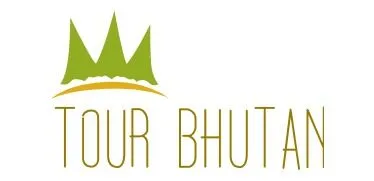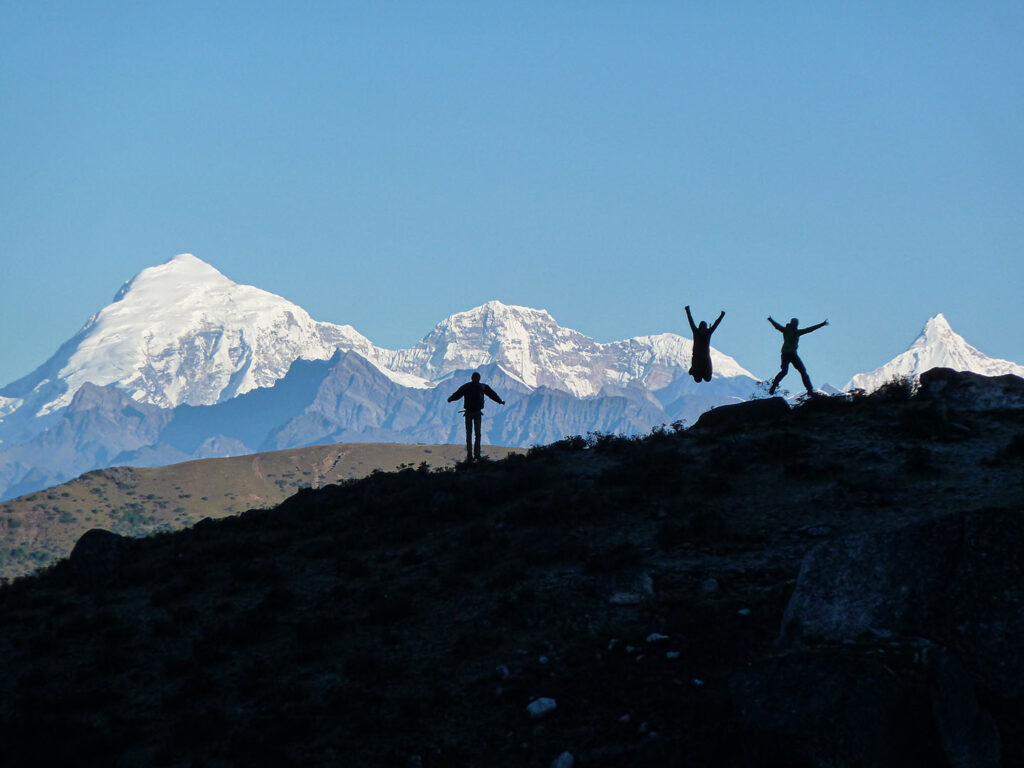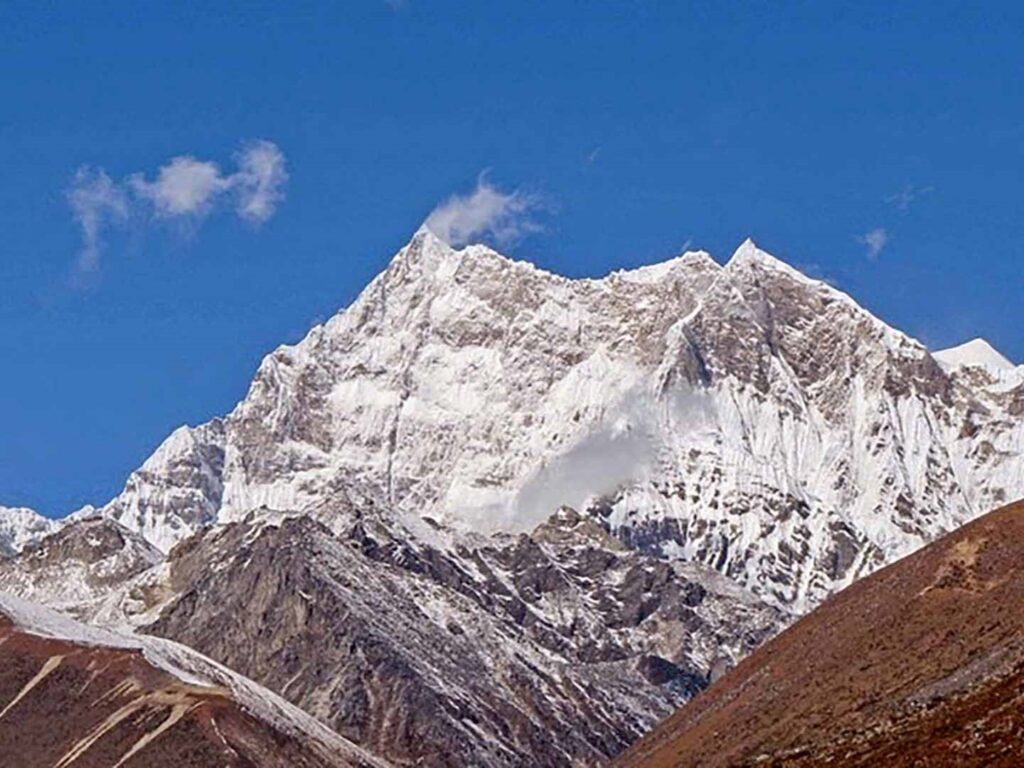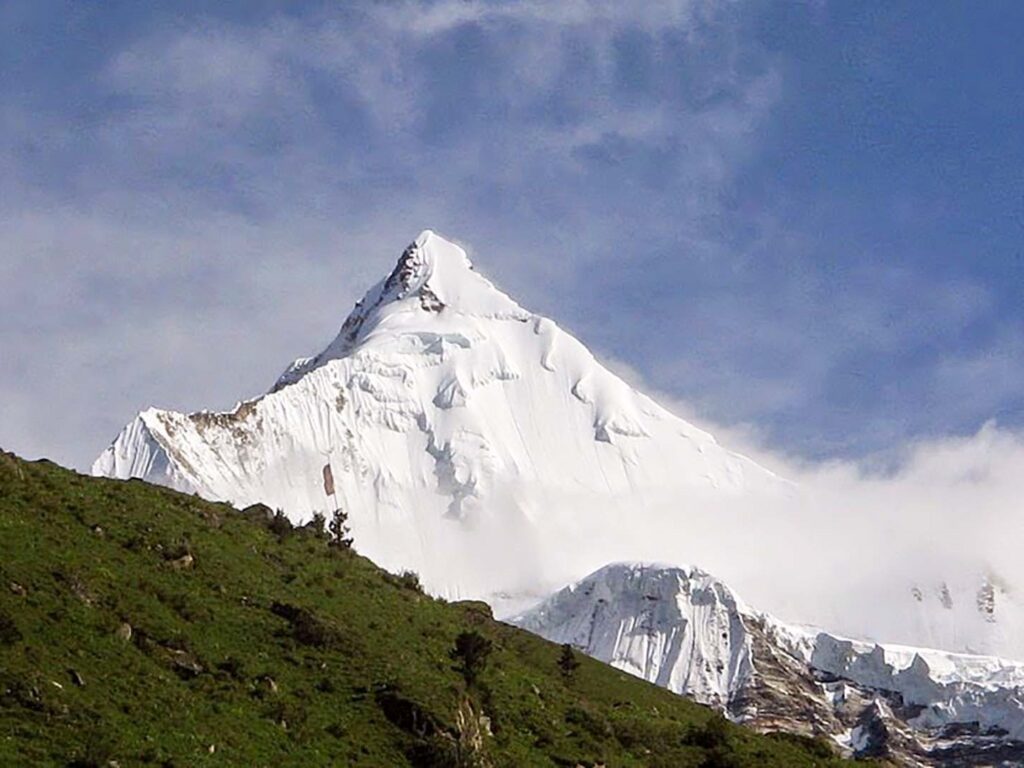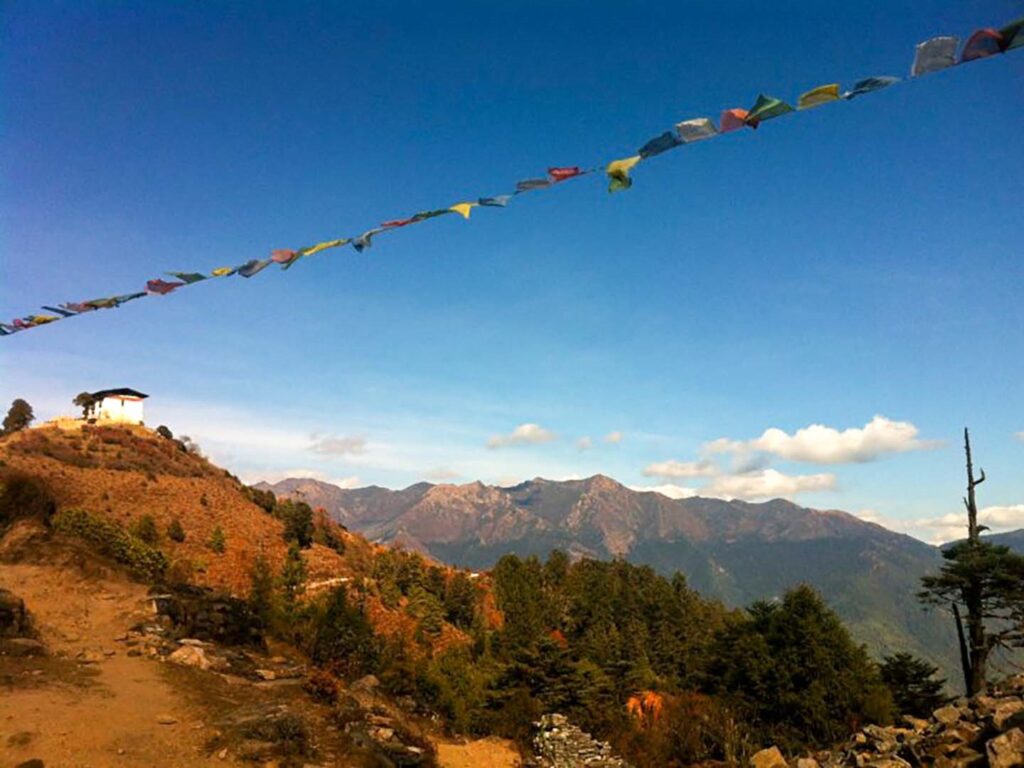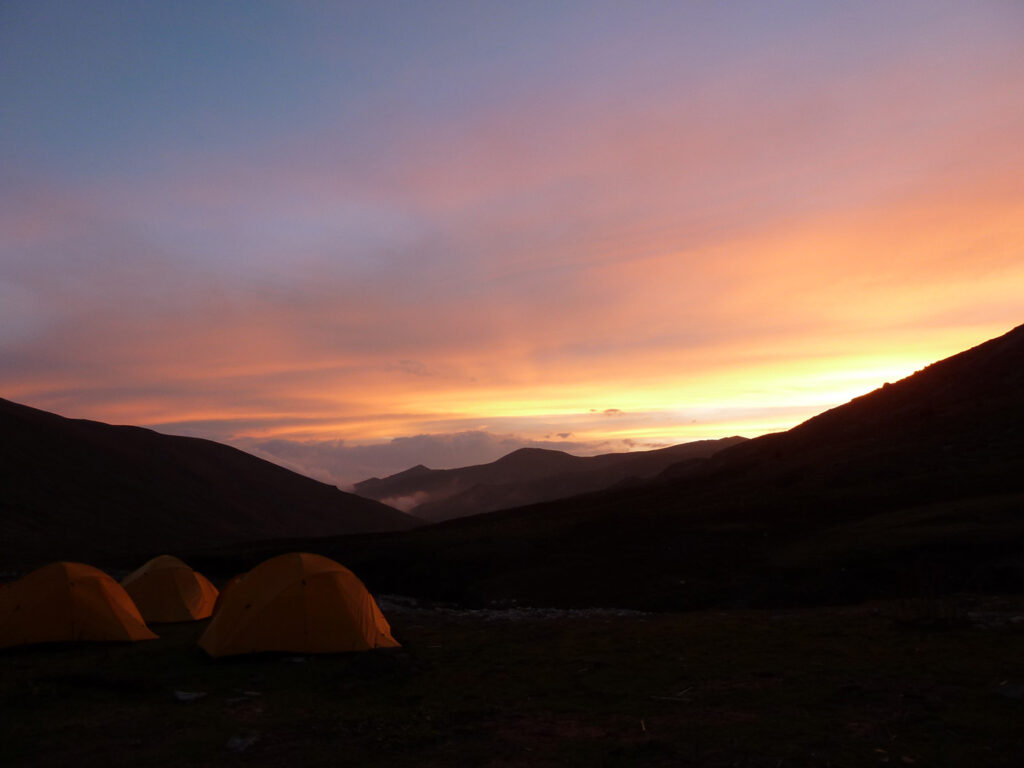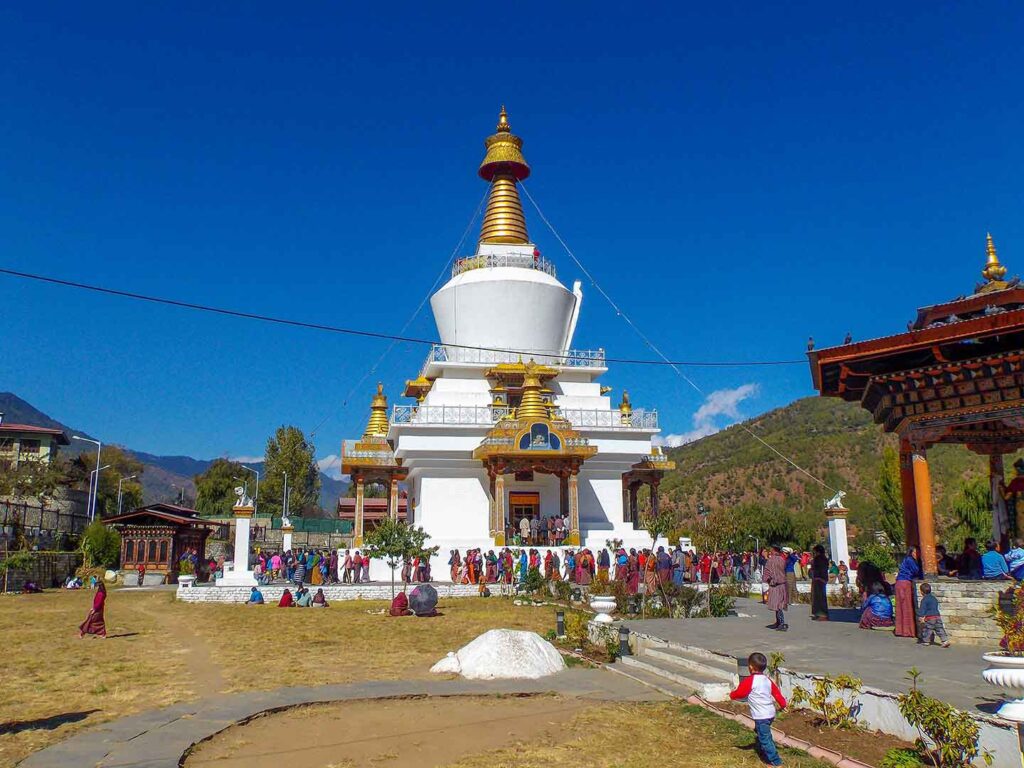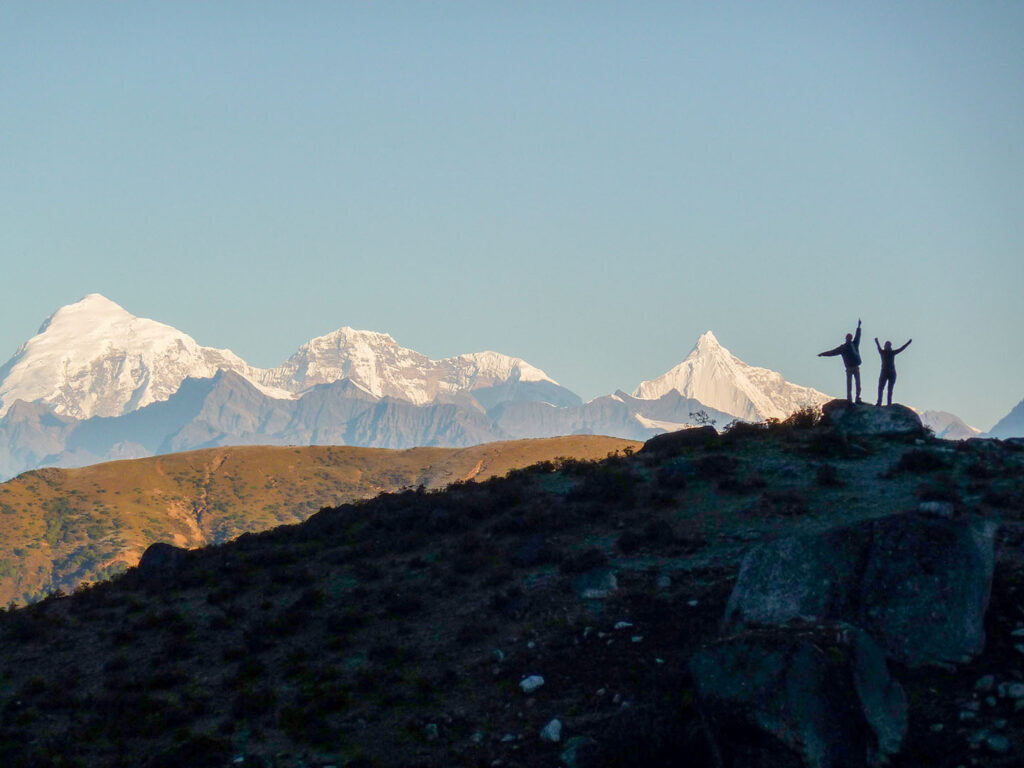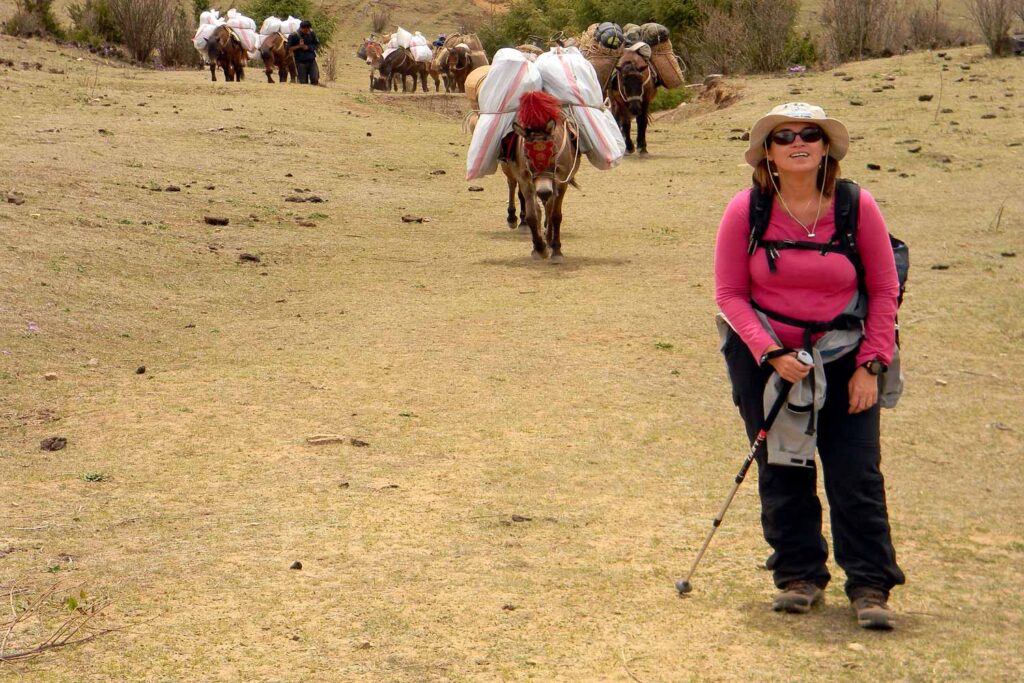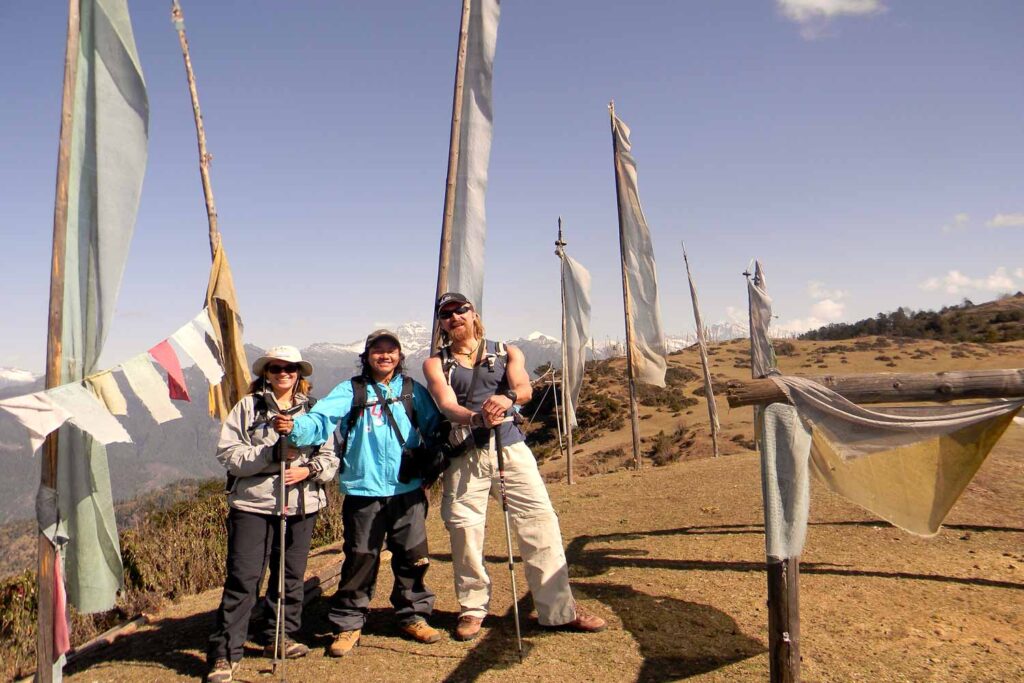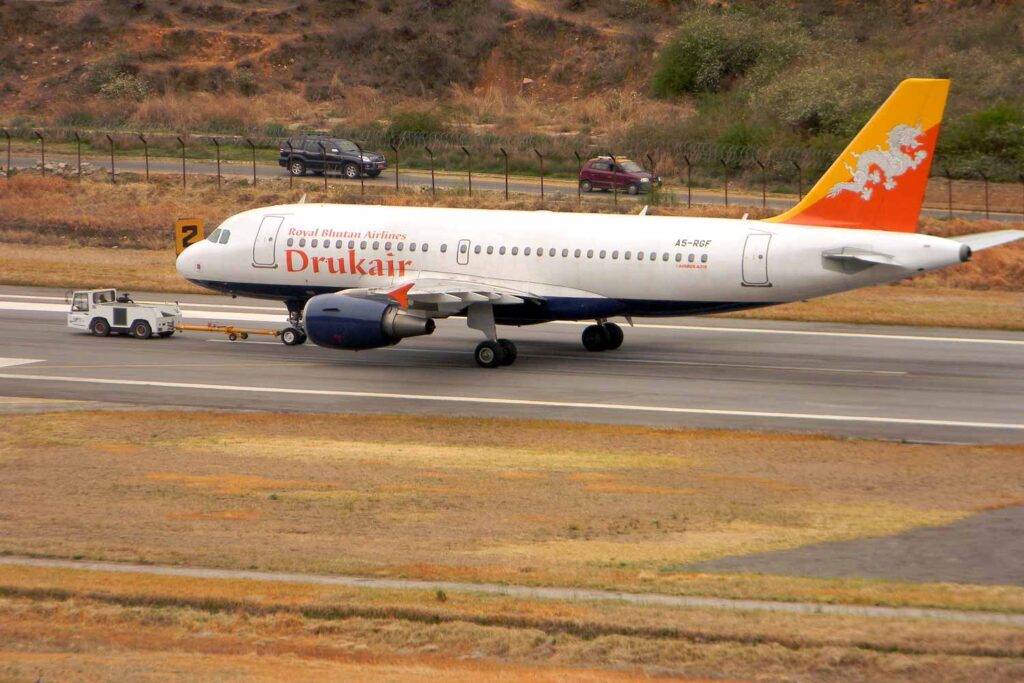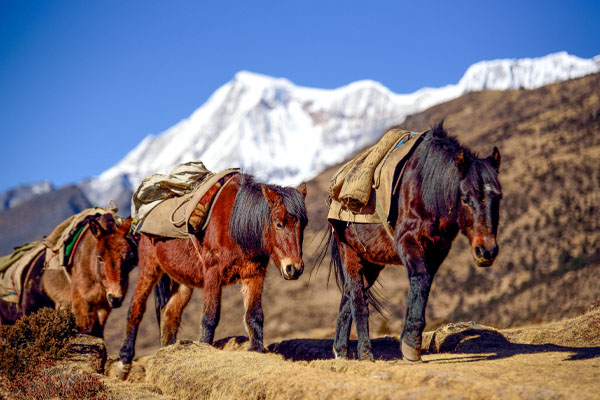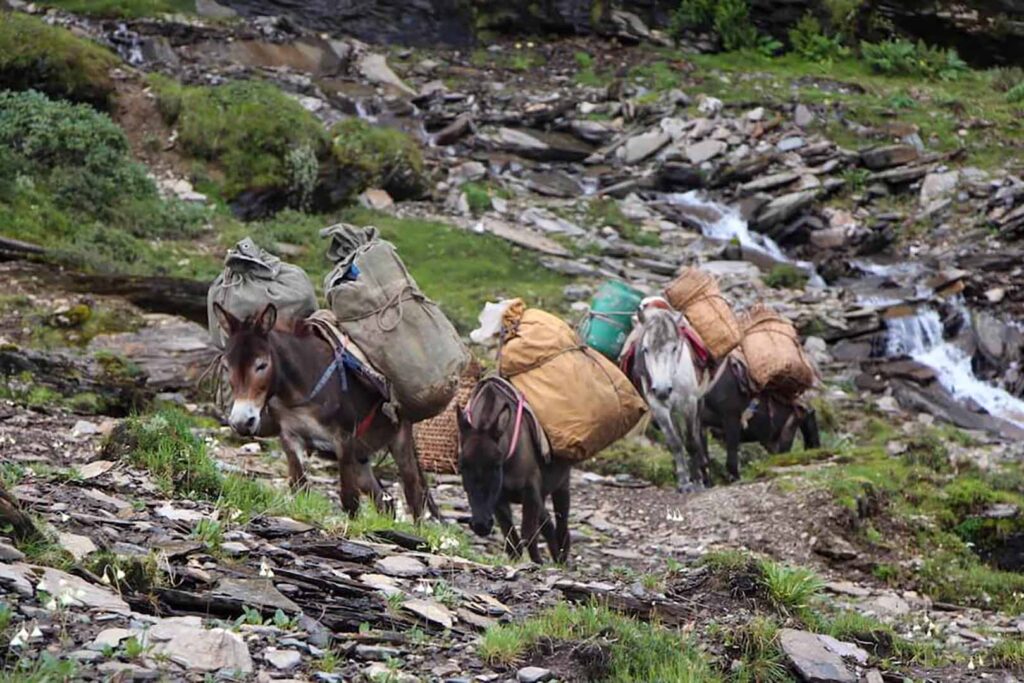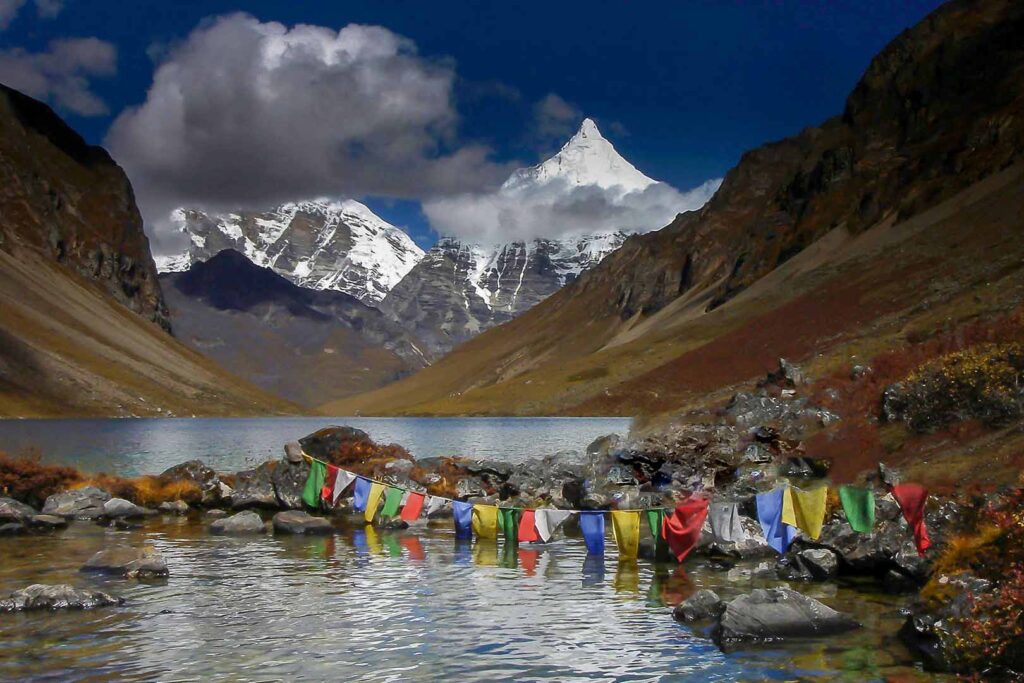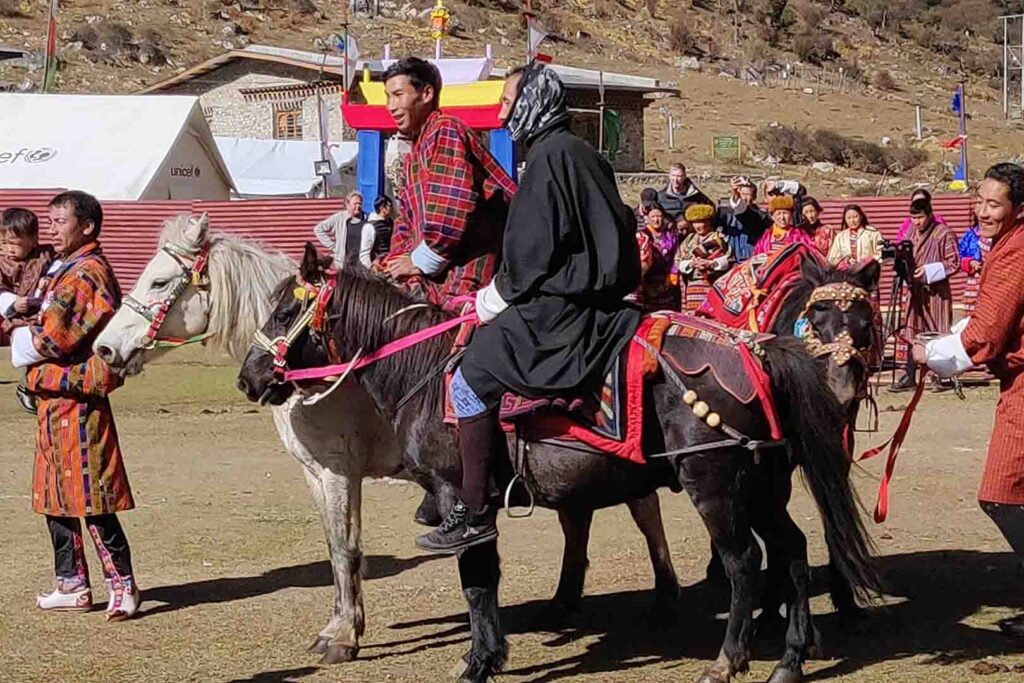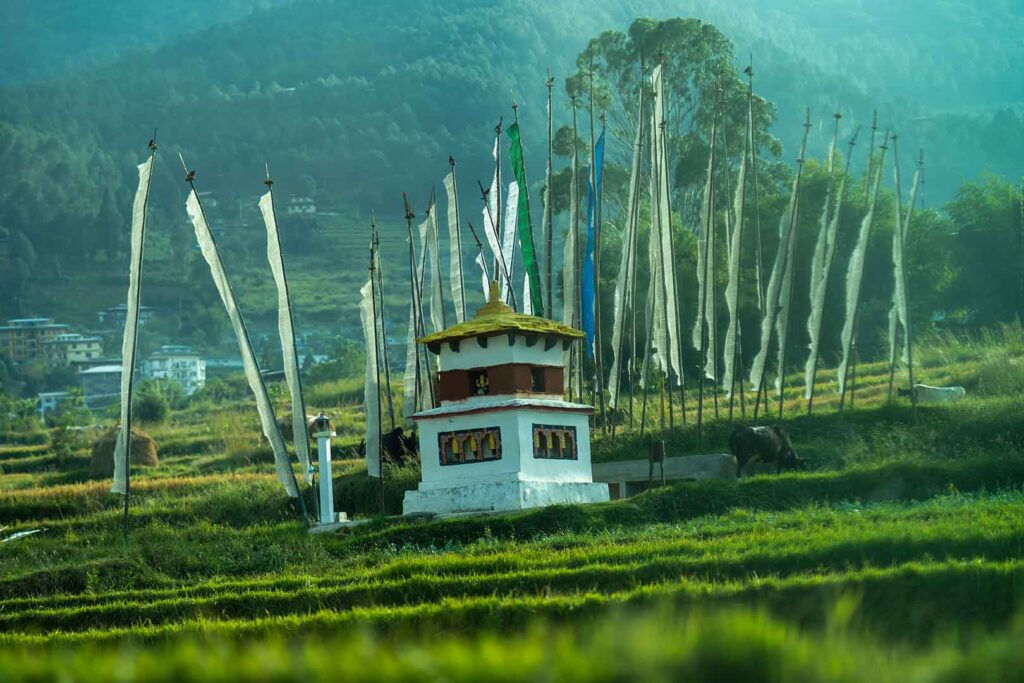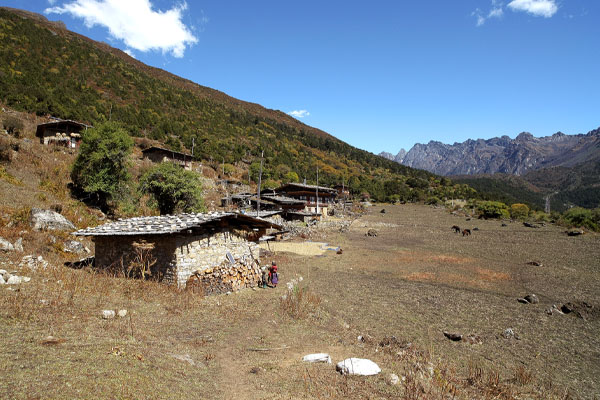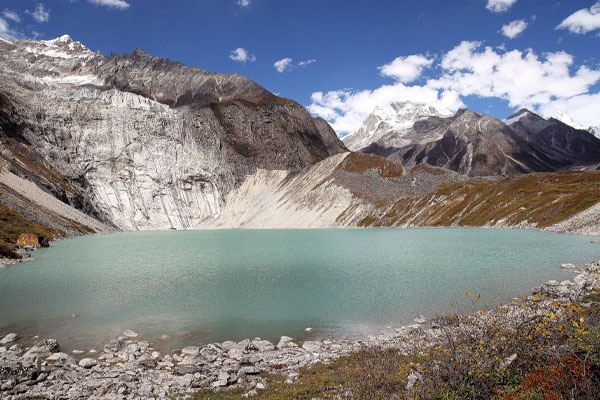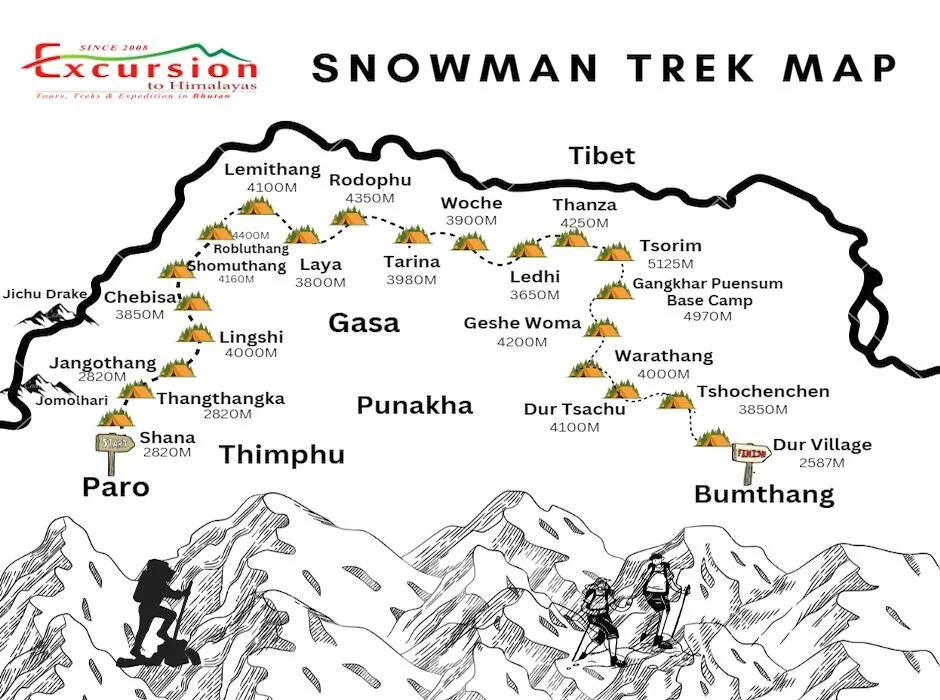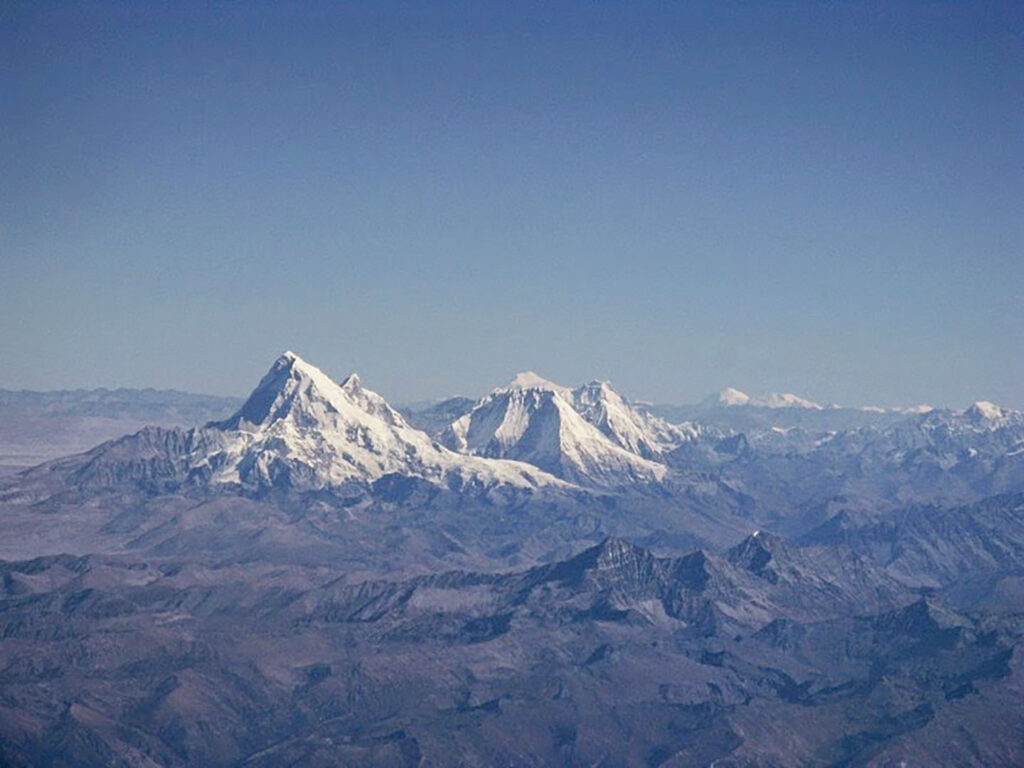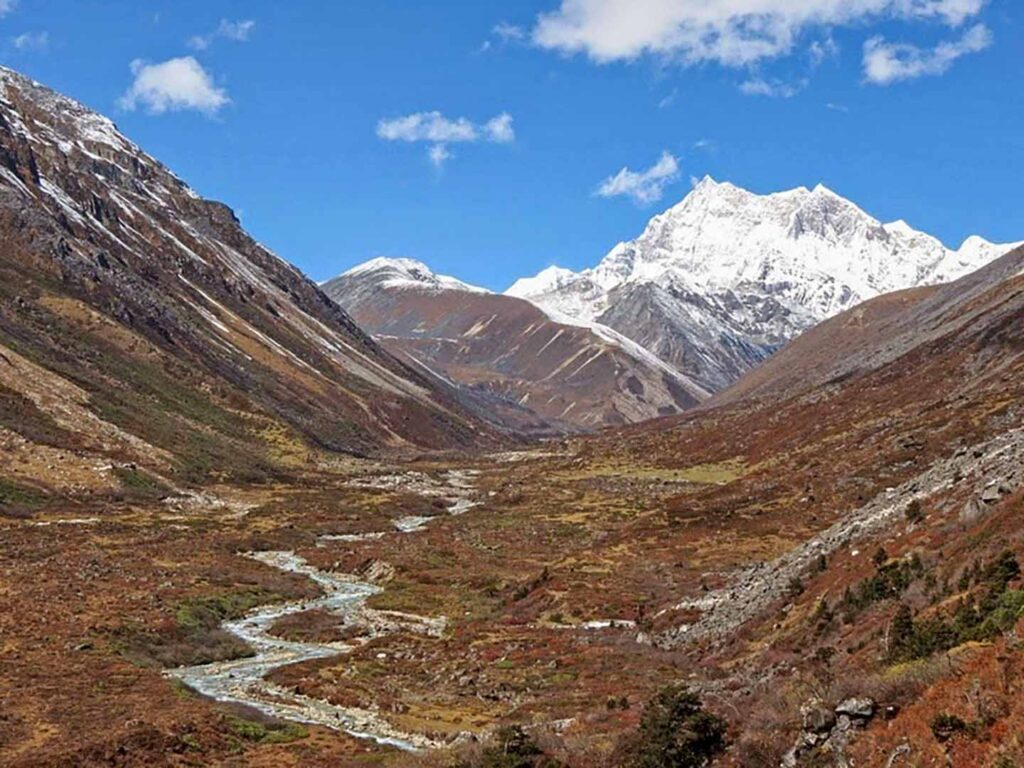It is a 7-day Trek from Paro to Jumolhari base camp at Jangothang, returning via the same route or by an alternative trail to Paro. There is another route of Jomolhari Trek where you can take a round trek if you have enough time. The view of Jumolhari Mountain (7314 M) from Jangothang is spectacular.
This Bhutan Trek also affords an excellent opportunity to see Yaks and Yak herders Camp site. The Trek is very popular. The highest point is 4115 Meters. This challenging yet rewarding trek offers encounters with local yak herders, visits to remote villages, and an immersive cultural experience. As you reach the base camp, surrounded by towering peaks, the unparalleled beauty of Bhutan unfolds. Ideal for adventure seekers, the Jomolhari Base Camp Trek promises an unforgettable exploration of Bhutan’s natural wonders and cultural heritage. The Trekking routes fall in the protected sites of Jigme Dorji National Park.
On the Bhutanese side is a Jomolhari Temple, toward the south side of the mountain about a half-day’s journey from the army outpost between Thangthangkha and Jangothang at an altitude of 4150 meters. Religious practitioners and pilgrims visiting Mt. Jomolhari stay at this temple. There are several other sacred sites near Jomolhari Temple, including the meditation caves of Milarepa and Gyalwa Lorena. Within an hour’s walk up from the temple at an altitude of 4450 meters is Tseringma Lhatso, the “spirit lake” of Tsheringma.
Jomolhari Base Camp Trek Itinerary
- Day 1 Arrival Paro International Airport and Allamatisation.
- Day 2 Start of the Trek from Shana Camp- 14Km/ 5 to 6 Hours and Camp at 2810m
- Day 3 Shana to Thathangka Camp at 2820M altitude.
- Day 4 Thathangka to Jangothang Camp at 4080M
- Day 5 Jangothang Halt at Camp
- Day 6 Jangothang to Thathangka Camp at 2820M altitude
- Day 7 Thathangka to Shana Camp 2810M
- Day 8 Shana to Paro
- Day 9 Paro to Airport and See Off.
Jomolhari Base Camp Trek Cost
All our Trek costs are inclusive of SDF. There is no hidden cost involved. The cost covers everything mentioned at the time of booking this Trek with us.
- Solo Trekkers Cost USD 3640.00
- 2 Pax Group Cost USD USD 2740.00 Per Person
- 3 to 4 Pax Group Cost USD 2400 Per Person
Jomolhari Base Camp Trek Information
- Trek Distance: 82 Km
- Highest Altitude: 4112M above Sea Level
- Camp Sights: Shana (3200m), Thathangka (3333) and Jangothang (4112M)
- Guide for the Trek: We use a professional trekking Guide for the whole tour.
- Trekking Equipment: All our equipment is of high quality and approved by our past clients
Jomolhari Base Camp Itinerary
Arriving in Paro on our national carrier, Druk Air or Bhutan Airline sets the stage for a stunning introduction to the breathtaking beauty of our nation. In clear skies, you’ll be treated to awe-inspiring vistas of the world’s highest peaks before descending to the verdant, fertile Paro valley. Upon landing, your Bhutanese guide from Tour Bhutan will extend a warm welcome and then escort you on a brief drive to your hotel.
Our trek to Shana starts at Drukgyal Dzong following the Paro river and we pass cultivated fields and tiny picturesque villages. The forests are alive with numerous birds and brightly colored butterflies. Overnight at camp Shana. Altitude 2,820 m; Distance 14 Km; Time 5 – 6 hours.
The trail meanders alongside the river, cutting through a densely wooded terrain dotted with a handful of solitary farmhouses. As you continue, the path gradually narrows and becomes more secluded, winding its way up and down along the course of the drainage. Along the way, you’ll encounter a junction where an alternate route veers northward, leading over the Tremo La to Tibet.
Your campsite is nestled in a picturesque meadow, complete with a stone shelter, at an altitude of 3,610 meters. The day’s journey covers a distance of 21 kilometers and typically takes 7 to 8 hours to complete.
As the morning unfolds, you’ll pass a small army post and the trail will gradually lead you out of the forested area, opening up to a stunning valley. Along the way, you’ll come across Tegethang, which serves as a winter residence for yak herders.
You’ll have the opportunity to enjoy lunch in one of these huts. Expect to encounter numerous yaks during the day before reaching the Jhomolhari base camp, located at an altitude of 4,115 meters.
The base camp offers breathtaking views of towering mountains, and nearby, you’ll spot the remnants of an ancient fortress that once defended Bhutan against Tibetan incursions. This leg of the journey spans a distance of 15 kilometers and typically takes 5 to 6 hours to complete.
A rest day. A chance to walk up to the Jhomolhari glacier or to the Tsho Phu lakes in the opposite direction. There is a popular Jomolhari Mountain festival that takes place every year at Jangothang. This is very popular and locals from the nearby village join this beautiful festival.
In the morning, after passing a small army post, the trail gently departs from the forested area and gradually ascends into a picturesque valley. Along the way, you’ll traverse Tegethang, which serves as the winter residence for yak herders.
Lunch will be served in one of these huts, providing a unique cultural experience. Throughout the day, you’ll encounter numerous yaks as you make your way to the Jhomolhari base camp, situated at an altitude of 4,115 meters.
At the base camp, you’ll be treated to awe-inspiring vistas of towering mountains, and nearby, you’ll spot the remnants of an ancient fortress that once served as a protective stronghold guarding Bhutan against Tibetan invasions. This segment of the journey covers a distance of 15 kilometers and typically takes 5 to 6 hours to complete.
The trail follows the river through a heavily forested area with a few isolated farmhouses. It narrows and closes in and the trail winds up and down along the drainage. We pass a junction enroute, where another path leads north over the Tremo La to Tibet. Camp is in a meadow with a stone shelter. Altitude 3610 m; Distance 21 Km; Time 7 – 8 hours.
Our trek to Shana starts at Drukgyal Dzong following the Paro river and we pass cultivated fields and tiny picturesque villages. The forests are alive with numerous birds and brightly colored butterflies. Overnight at camp Shana. Altitude 2,820 m; Distance 14 Km; Time 5 – 6 hours
Today we drop you at the airport and our guide and driver will assist you to reach the port.
